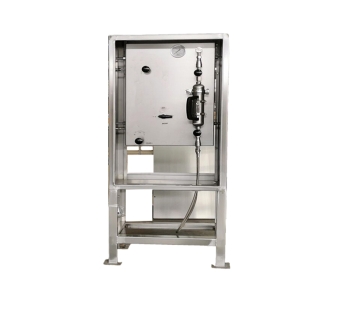Closed loop sampling system for liquid and gas Suitable for all kinds of media in petrochemical equipment, especially toxic and harmful, inflammable and explosive medium and low pressure gas medium without leakage sampling. The collected samples have strong authenticity, high accuracy and no residual liquid/gas emission. Effectively prevent the harm of toxic and harmful media to the operator. At the same time, it will not pollute the environment and avoid dangerous accidents that may be caused by flammable and explosive media during sampling. In line with the national requirements for environmental protection and fire, explosion-proof and other standards.
Closed loop sampling system Technical parameter:
Model Number :Closed loop sampling system
Material : Stainless Steel 304, 316L
Use : Gas Liquid Name
Sealed : Sampling System
Certification: ISO 90001 Test
Pressure: 5Mpa Standard DOT/CE ASTM D1265;SH/T 0233
Application:Petrochemical Engineering Sampling Process
working pressure: 1500 psig @ 70°F (103 bar @ 20°C) Temperature range: 0°F to 450°F (-18°C to 232°C)
Connections: 1/4" tube fitting
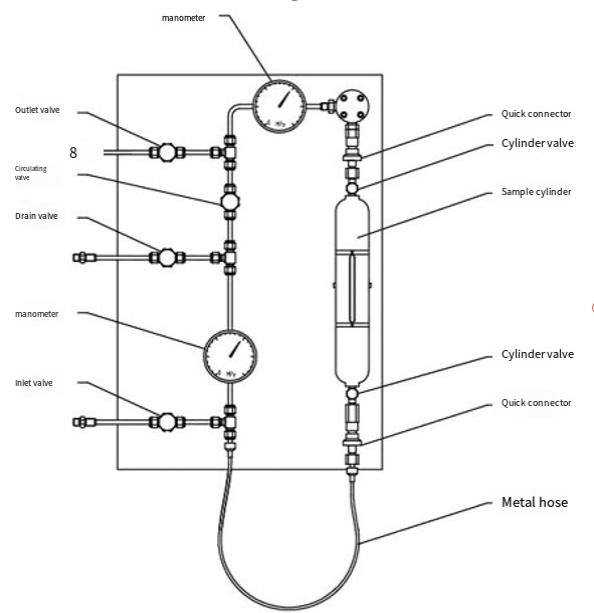
Closed sampling system operation flow:
1 - Before sampling, ensure that each valve is closed, install the sampling bottle, and make the double needle into the bottle;
Place a new septum on the sample bottle. Insert the bottle with cap and septum into the sleeve until the septum is pierced by the needles. Swing down the bottle retaining clip.
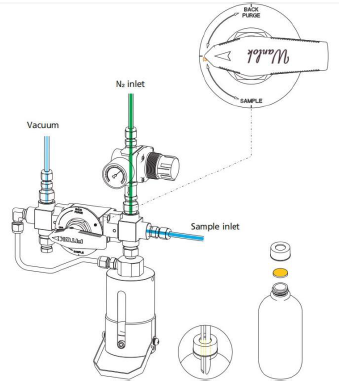
2 - Back Purge
Turn the handle to the “BACK PURGE” position, allowing Nitrogen to force the residual sample from the system into the process line to ensure representative sampling.
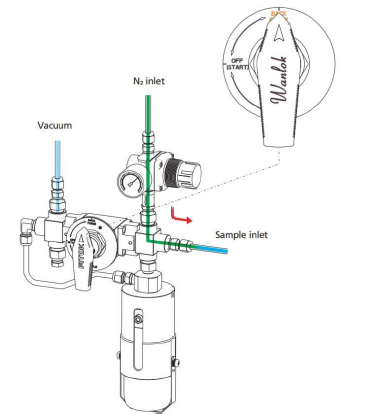
3 - Sampling
Turn the handle to the "SAMPLE" position, connecting the bottle with the vacuum connection to create a vacuum in the sample bottle. The sample flows into the bottle.When the required amount has been taken, turn the handle to the “OFF” position to close the sampling system.
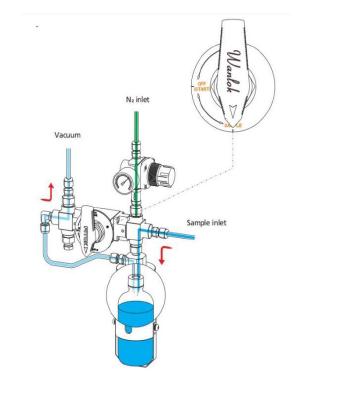
4 - Off
Remove the bottle retaining clip and take out the bottle from the sleeve. The septum reseals automatically to complete the sampling process.
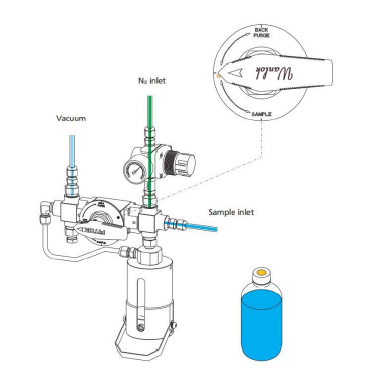
A sampling system usually refers to a system that can intermittently (or discretely) sample a continuous signal and convert it into a discrete signal (such as a pulse train or a digital sequence) for subsequent processing or storage.Custom sampling system At the heart of this process is the sampling technique, which obtains a series of discrete signal values by measuring a continuous signal at a specific point in time (sampling point).
A sampling system usually refers to a system that can intermittently (or discretely) sample a continuous signal and convert it into a discrete signal (such as a pulse train or a digital sequence) for subsequent processing or storage.Custom sampling system At the heart of this process is the sampling technique, which obtains a series of discrete signal values by measuring a continuous signal at a specific point in time (sampling point).
A sampling system usually refers to a system that can intermittently (or discretely) sample a continuous signal and convert it into a discrete signal (such as a pulse train or a digital sequence) for subsequent processing or storage.Custom sampling system At the heart of this process is the sampling technique, which obtains a series of discrete signal values by measuring a continuous signal at a specific point in time (sampling point).
